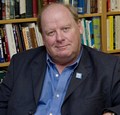BRITISH COLUMBIA’S WATER LICENSING CALCULATOR: Managing Water as One Resource in British Columbia – online tool works for any and all properties in the province! (May 2016)

“In British Columbia, surface and groundwater are now managed under the same regulatory system. All non-domestic users of groundwater are required to obtain a licence to withdraw and use water from wells. This means that about 20,000 existing non-domestic well owners, including those in the agriculture sector, must now apply for a licence. The tool will help provincial water managers assess the water requirements of users and enable us to better manage BC’s water resources in collaboration with the agriculture sector,” stated Greg Tyson.










